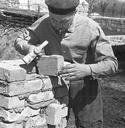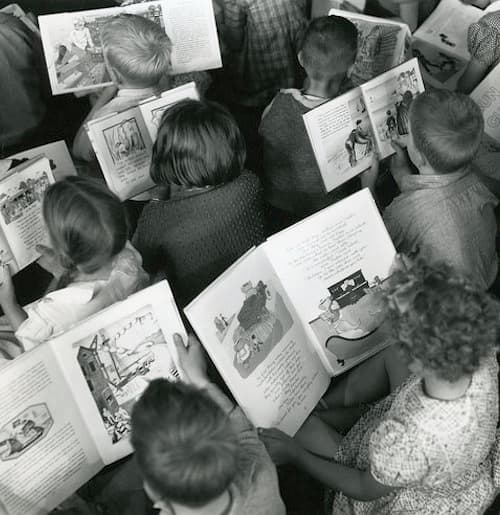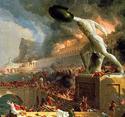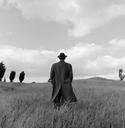When seeking to understand a thing, you must investigate its origins. In this vein, when we consider the nature of education and what it means to educate, especially within the changing contours of modern society, it is crucial to root our investigation historically, allowing our reflection on the present and the future to be enriched by the story of the past.
In his book, Parish School: American Catholic Parochial Education from Colonial Times to the Present, historian Timothy Walch offers a comprehensive historical study of the origins and growth of Catholic schools in America.
Walch acknowledges this as “a story worth telling” (5), and yet “one of the most neglected in American historiography” (2). It is a story of sacrifice and heroic commitment by individuals within the Church, animated by the conviction that education is crucially important, one of the most important things we give to our children, and that it is the privilege and responsibility of the family and of the Church to be good stewards of this gift.
Walch begins the story with the Spanish and French missionary efforts—which, however fruitless they may have seemed, were nonetheless heroic—and with the experience of Catholic colonists, who faced a life in this New World even more anti-Catholic than what they left behind. From its beginnings, then, the rise of Catholic schooling is a tale of sacrifice, struggle, and survival: an attempt to preserve and pass on a way of life to the next generation, amid a foreign and hostile environment.
This was true of the 19th century as well, which introduced over 5 million immigrant Catholics into American culture and society, dramatically and forever altering the life and work of the Church. One of the most significant factors in the history of American Catholic schools, the immigrants prompted a conflation of “Catholic” and “foreign” and sparked new, violent confrontations that would reverberate for generations to come. Common public schools arose in an effort to safely homogenize foreigners into (Protestant) American society—but they “failed to understand…that there were fundamental differences between their own educational assumptions and those of the Catholic Church” (28). Not only did these proposed common schools threaten to alienate Catholic children from their religious, cultural, and familial heritage, they also started from the assumption that the task of education should belong to the state.
The one thing, Walch notes, upon which everyone agreed was “the importance of schools,” indeed, that “the future belongs to him that controls the schools” (65). The urgency of this conviction shaped the next few decades. Even the pope, Pius IX, alerted to the state of need in America, urged: “Every effort must be made to increase the number and quality of parochial schools” (59). But whether or not parochial schools were established and functioned successfully within a particular diocese depended largely upon the individual commitment of the bishop and his priests, as well as the support of the laity. At the end of the day, when this ideal met the lives of real people, real families, real parishes, in many places, the Church simply could not meet the need.
One of the primary factors upon which the development of schools depended was the work and presence of religious sisters. “It would not be difficult to make the case,” Walch asserts, “that sister-teachers were the single most important element in the Catholic educational establishment” (151). By 1900, there were more than 40,000 religious sisters staffing parish schools. More than 1,600 of these belonged to St. Elizabeth Ann Seton’s order, which “became the framework for the growth of Catholic schooling during these formative years and the decades that followed” (20). The work of these sister-teachers was a heroic response to a great need. For several decades, there were no real teacher training programs in place, and teachers relied on a sort of “craft system,” where novices were mentored by more experienced teachers. Because it was not possible for the Church to expand the school system and to improve the quality of its educators, simply staffing classrooms took priority. These sisters came to their work, then, with little or no training, varying degrees of experience, and often directly from a foreign country. Their sacrifice and dedication carried the work of Catholic schools into the modern era.
At the turn of the century, Catholic education in America had grown to such a scale that the Report of the U.S. Commissioner of Education had to acknowledge its massive work. Decades of rapid growth created a situation in great need of order and organization, initiating a movement of centralization and leading to the development of school boards and superintendents. Furthermore, as the world changed, racked by economic depression and world wars and flooded with new philosophies, new pedagogical approaches were growing up in abundance, and leaders in Catholic education were faced with pressing questions about the future of parochial schools, their content and purpose. Some were eager to imitate and learn from experimentation happening in public schools, while others perceived within American culture the growing dangers of materialism, hedonism, and immorality, and were wary of accepting what might prove a recipe for social and moral disaster. Everyone recognized, however, that “Catholic schooling was a necessity if the Church was to survive and flourish in Protestant America” (87). The real question became: what is Catholic schooling? And while it was agreed that it did not mean simply secular education with prayers and the Catechism tacked on, what it did mean was not easily answered.
In many ways, the second half of the 20th century “caused Catholic educators to question the viability and survival of the parish schools they had worked so hard to preserve” (169). The rapid growth of the 1950’s could not be sustained, and Catholic schools were becoming an economic burden upon a people that was no longer sure it really wanted or needed them. The decline in religious vocations left many schools without teachers, the secularization of public schools removed the threat of proselytization and the conflict that had driven the early growth of the parish school system. In addition, Walch notes how values and ideas were changing, thereby changing the story of Catholic schools—schools which had depended on great sacrifices of time and money, the heroic self-gift of so many persons certain of the value of this work, and the conviction of families that the development of the soul mattered infinitely more than that of a career. The future of Catholics schools, then, rests “on the foundation of parental commitment” (240) because, at the end of the day, it is the parents who are the primary educators, and they have to want Catholic education for their children in order for parochial schools to thrive.
It is important to note that, having written the book in 1996, Walch’s “present” is now a couple of decades into our past. There is certainly, therefore, more to be said, studied, and shared about how Catholic schools have grown into the twenty-first century. But for the years it comprehends, this work provides an impressively thorough overview, and a helpful foundation for further study.
It is also worth noting that the narrative is often driven by a strong sense of conflict, or power-struggle, and that this perspective undeniably colors the author’s language and assertions, as well as what aspects of this history he is best conveying. Nonetheless, a fascinating, insightful, and at times haunting work, Parish School is a worthy read for anyone interested in Catholic education and American life, offering a rich context in which to understand where we have been and hopefully to shape where we are going.
Aisling Maloney is an elementary teacher at Siena Academy Montessori School in Northern VA.



